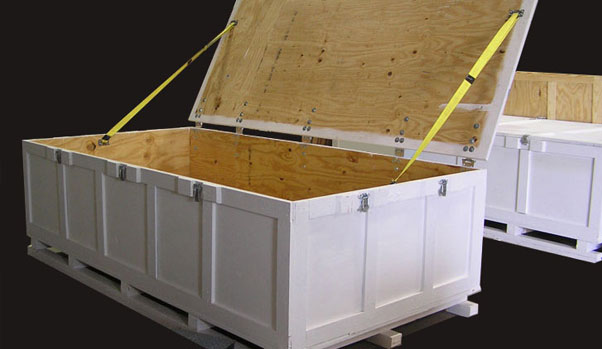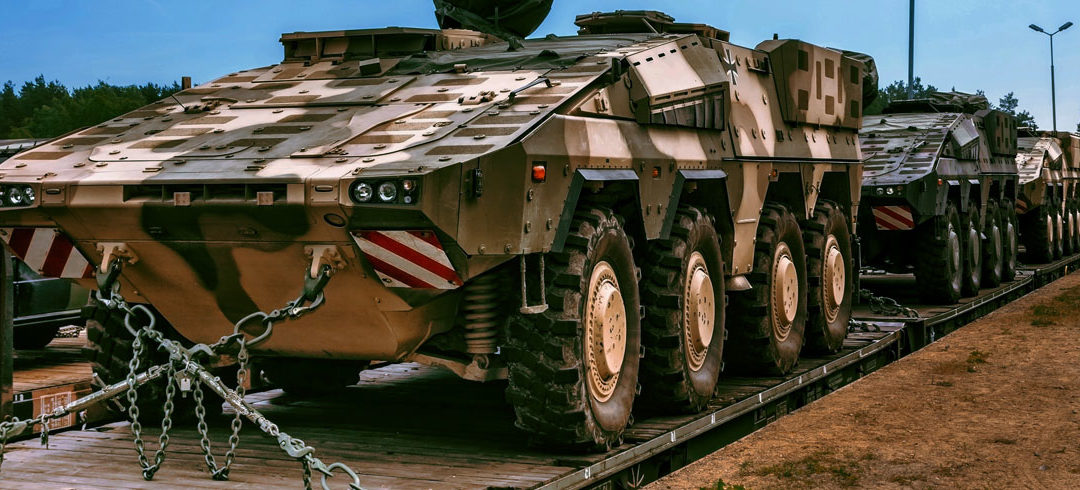When it comes to a worldwide presence and the need to get equipment and other resources to where they are required quickly and efficiently, no organization compares to the U.S. military. In fact, logistics are often referred to as the lifeblood of the military. Much of the transporting of goods for the Marine Corps, Air Force, Army, Navy and Coast Guard is handled by the branches themselves. However, they also use outside specialty crating, packaging and shipping companies to assist them with logistical challenges.
Not surprisingly, military entities that rely on discipline and precision to operate effectively have very specific requirements for everything from the materials used to package and crate assets to how they are handled to how they are tracked during transport. This means that the businesses they trust to ship their goods must have extensive experience in collaborating with the military.
Military Shipping: Meeting the Requirements of MIL-STD-2073-1, MIL-STD-129, MIL-STD-130
MIL-STD-2073-1 is a standard for the packaging of military items. It includes requirements for a wide range of attributes including:
- Quantity per unit pack
- Quantity per intermediate pack
- Preservative material to be applied
- Preservation method
- Cleaning and drying procedure
- Cushioning
- Wrapping
- Barrier materials
- Packing level
- Overpack shipping container
MIL-STD-129 is a standard for the labeling of military items. It covers:
- Barcoding (including unit, intermediate pack and overpack labeling)
- RFID (radio-frequency identification) tagging
MIL-STD-130 is a standard for the item unique identification labeling of military items, or “IUID labels.”
Plus, entries in the MIL-STD-2073-1 standard frequently refer to other, related specifications. This results in military crating, packaging and shipping being a highly complex process.
In order to execute moves successfully and in compliance with military regulations, a shipper must understand how to decode shipping requirements, select the right spec materials, and use those materials effectively to ensure the protection and preservation of shipped items. The shipping provider must also understand how to mark containers in accordance with all relevant specifications.
An experienced military shipping and crating company like Craters & Freighters can also provide containers that meet various military, government, and ASTM specifications like ASTM-D6251, ASTM-D6880, ASTM-D6256 and ASTM-D7478. This includes wooden boxes, slat crates, open crates and hood-style crates, as well as pallets and load bases.

MIL-SPEC Packaging and Shipping for Prime Vendors
The term MIL-SPEC—sometimes written as Mil Spec, MIL-Spec or MilSpecs—is short for military specifications. The reason for documenting military packing and shipping specifications is, as Wikipedia explains, primarily to achieve necessary standardization across large, globally dispersed entities: “A United States defense standard, often called a military standard, “MIL-STD”, “MIL-SPEC”, or (informally) “MilSpecs,” is used to help achieve standardization objectives by the U.S. Department of Defense. Standardization is beneficial in achieving interoperability, ensuring products meet certain requirements, commonality, reliability, total cost of ownership, compatibility with logistics systems, and similar defense-related objectives.”
Mil spec requirements are very important to all stakeholders in the military supply and transportation ecosystem, including what are called “prime vendors.” These are companies that have been vetted and approved to sell their products directly to the U.S. government.
Their work is greatly simplified when they collaborate with a custom shipping, packaging and crating company that understands mil spec packaging. For example, the mil spec expertise that we have at Craters & Freighters, as well as the containers and other items we build and/or maintain in inventory, enable us to help prime vendors remain in compliance with military regulations when they send their products to the various branches of the Armed Forces. In fact, some of our locations have team members that focus exclusively on—and have in-depth knowledge of—mil spec packaging and shipping.
Crating Strategies Developed by Packaging Engineers
Military units—like all recipients—need the items shipped to them to arrive undamaged. That’s why they rely on a custom shipping, packaging and crating company that has proven processes for preparing assets for shipping.
At Craters & Freighters, we have packaging engineers on staff who develop a comprehensive strategy for the packaging, labeling and crating of every type of item we handle. We are a one-stop-shop for prime contractors, providing a contract solution for their Mil-Spec packaging, labeling and shipping needs.
This includes designing and building custom crates used for shipping as needed. It also involves utilizing blocking and bracing strategies that ensure assets don’t shift during transport. Simply dropping items into a generic crate and surrounding them with packing peanuts doesn’t come close to offering the kind of asset protection the military demands.
We can assure prime contractors that they are in conformance with contact specifications. We can also provide specialized services for WAWF, VSM, SIR and CAV.

Overseas Shipping and ISPM 15 Compliance
The U.S. military operates in locations around the world. Consequently, shipments of military assets often originate in the U.S. and are transported abroad. Wood pallets and crates used in those shipments must adhere to what’s known as ISPM 15—short for International Standards for Phytosanitary Measures No. 15. This set of rules and regulations helps prevent the international transport of insects that live in or on wood and could harm plants and ecosystems in countries where they aren’t naturally present.
Under ISPM 15, the wood used to construct pallets and crates must be heat treated or fumigated to ensure it doesn’t contain parasites. Specialty crating and shipping companies like Craters & Freighters that use pallets and crates must document all the wood they receive and ship out, and must also undergo monthly inspections. Crates and other items that have been inspected and approved get what’s often referred to as the “bug stamp,” which helps customs officials and others confirm that the wood has been treated and meets international shipping standards. Crates that don’t have the stamp can be fumigated or destroyed without notice at their port of entry.
Each of Craters & Freighters’ 65+ brick-and-mortar locations has a unique bug stamp number that is used on all crates shipped to locations outside the U.S. The fact that we’re certified and regularly inspected gives the prime vendors and military branches we work with confidence that shipments will move through customs without delay.
Turning to a Crating and Shipping Provider They Trust
The Marine Corps, Air Force, Army, Navy and Coast Guard have critical national security and defense responsibilities to attend to. They don’t have the time or resources to deal with damaged goods or track down lost shipments. Instead, they work with an experienced specialty packaging, shipping and crating company like Craters & Freighters that has a proven track record of success and handles all aspects of getting assets where they need to be, when they need to be there, in as-shipped condition.

